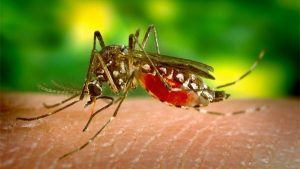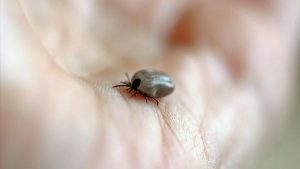With a mild winter now behind us, Connecticut faces a spring and summer with a higher population of ticks than we’ve seen in decades. The warmer weather is blamed for a greater survival rate of the tiny pests, so there will be significantly more of them this season.
More concerning, however, is that scientists are seeing a higher rate of Lyme disease among ticks tested. Scientists at the Connecticut Agricultural Experiment Station (CAES) report that nearly 38 percent of over 450 ticks tested were positive for Lyme disease – a jump from the 27 percent average they’ve seen over the last decade. The situation is so serious that Senator Richard Blumenthal has announced a federal grant to enhance research efforts into mosquito and tick-borne diseases, $3.25 million of which will be awarded to CAES.
While ticks are primarily associated with Lyme diseases, they do carry other serious – but less common – diseases that can be transmitted to humans. According to the state Department of Public Health, 2015 saw 2,553 reported cases of Lyme disease, in addition to 286 cases of babesiosis, and 120 cases of anaplasmosis in Connecticut. With tick bites already reported in the state, this year’s numbers promise to be much higher. A case of Powassan Virus, related to West Nile but transmitted by ticks, has already been reported. This disease is rare, but can be fatal.
That’s why it’s critically important to take whatever precautions you can to avoid these dangerous pests. Measures should include:
- Always wearing socks and shoes when in areas where ticks might be present – that is, ANY outdoor area with grass, ground cover such as pachysandra, shrubs, trees, leaf litter…really, any area that isn’t specifically urban. Your best bet is actually to tuck your pants into your socks, even if it’s less than fashion-forward. It’s also recommended that you wear light colors, so ticks will be easier to spot.
- Always wearing an insect repellent when outdoors. There are many effective types with DEET, Picaridin and other active ingredients that work well. However, none of them work non-stop, so be sure to re-apply periodically. Refer to this PDF (pages 4-5) for a really helpful breakdown of insect repellent options.
- Washing your clothes in HOT water as soon as you get in. You’ll want to get the smell of bug spray off them anyway, but a good wash will kill any ticks that have landed on your clothing. By the same token, take a hot shower and wash your hair.
- Checking yourself, your kids and your pets carefully when you come inside. Hopefully, you won’t find any ticks! Look very carefully in spots behind knees and elbows, and around the edges of the scalp, as these are easily missed. As a precaution, contact your local health department and ask if they have tick removal kits. (Should you find one, you can submit it for Lyme disease testing.)
- Preventative spray. We can help keep ticks at bay with our preventative spray. It’s safe for your family, your plants and your pets, and while it won’t completely eliminate ticks, it will greatly reduce their numbers – and your risk of getting bitten and sick.
Health officials are concerned about the high number of ticks in the state this year, and so are we. While we’re loathe to appear opportunistic, we know preventative spray can help keep you and your family safe. The threat of ticks and tick-related illnesses is alarmingly high this year, and we’re genuinely concerned for our community. If you need more information on how to protect yourself and your family, you’ll find a wealth of information on the CAES website: http://www.ct.gov/caes/cwp/view.asp?a=2837&q=378212&caesNav=|





